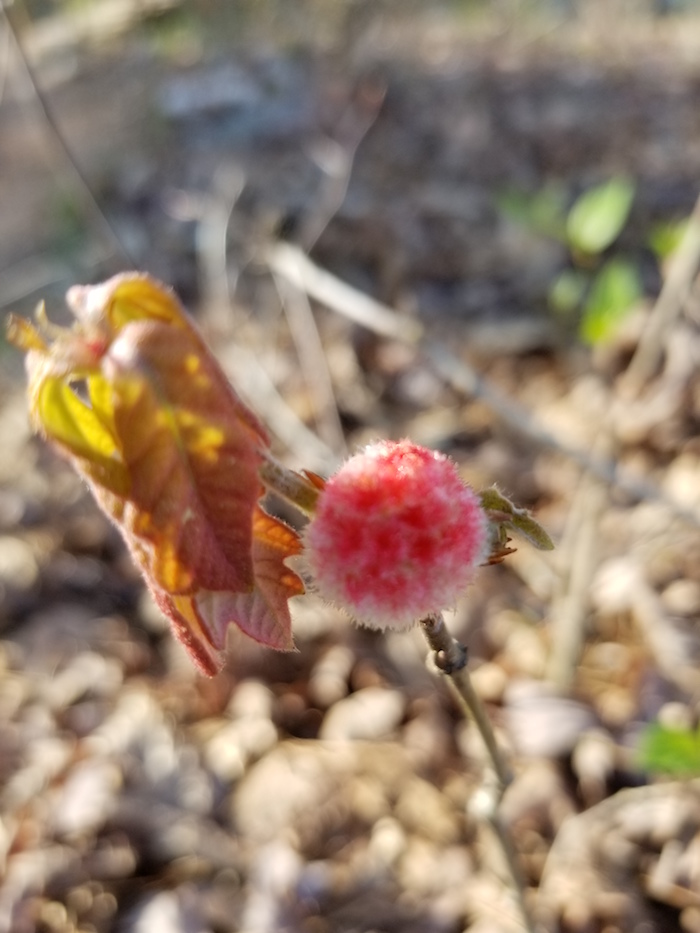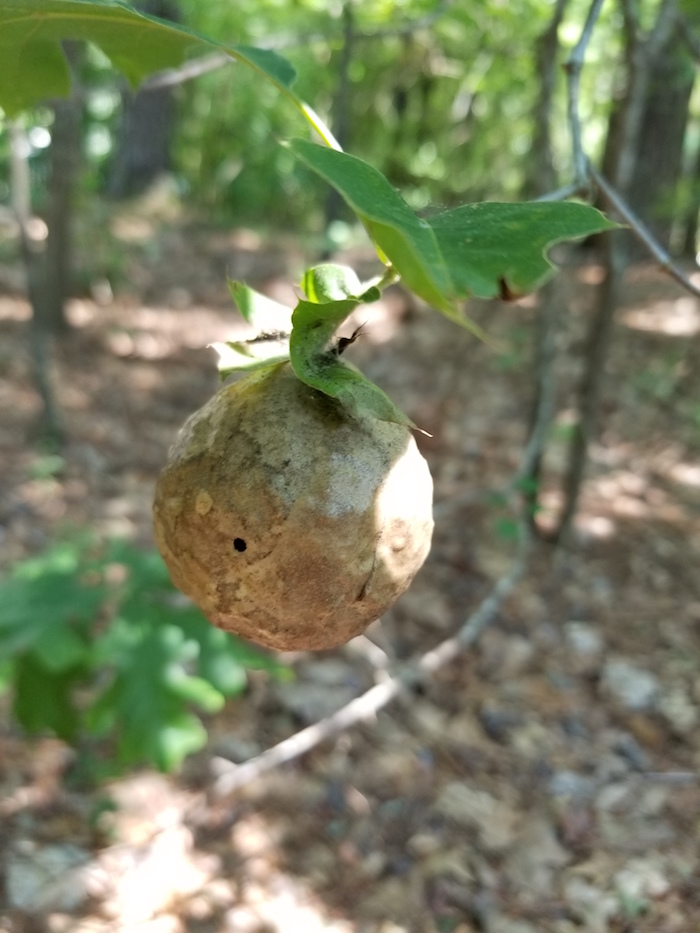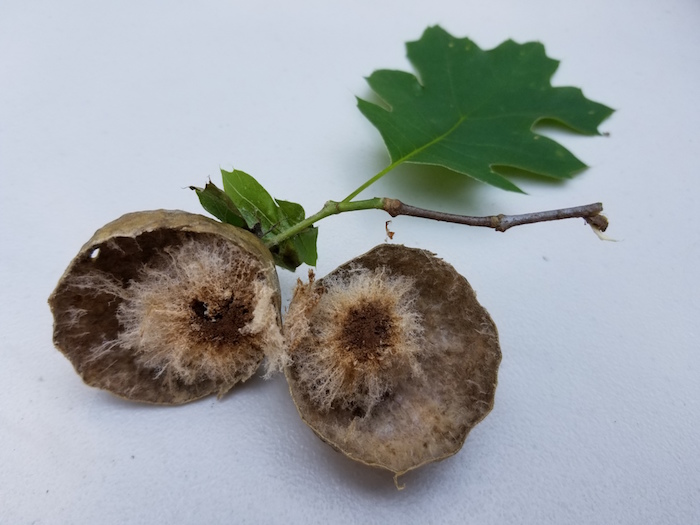Nature Now! Such Gall!
For immediate release ‐ August 04, 2020
Nature Now
Contact: Jessica Wackes, 919.707.9850. Images available upon request
As I was scanning the forest trail to avoid tripping over roots and rocks while walking the dogs, I spotted something that looked like a reddish-pink cotton ball. I quickly snapped a picture of it and noticed that the ball of fluff was attached to an oak sapling. It was late March, and there were several other oak saplings that were adorned with these Ping-Pong sized fuzzy baubles. Over the next few weeks the color of the balls faded to pinkish white and finally turned into a darker tannish color.

As it turns out, these balls are actually galls, spherical growths on the outer tissue of plants, often caused by parasitic insects such as wasps. It’s quite obvious why these particular galls are called “strawberry oak galls.” They are also known as wool sower galls and are the result of growth-inducing and regulating chemicals produced by a parasitic wasp that belongs to the Cynipidae family. In this case, a female Cynipid of the species Callirhytis seminator had pierced the leaf bud of an oak sapling with her ovipositor and deposited her eggs on the immature leaflets within the leaf bud. During this process she injected enzymes and plant-regulating hormones that are capable of “reprogramming” the normal growth of plant cells. The plant cells closest to the eggs break down and form a nutritious meal for the larvae.
The female dies shortly after depositing her eggs, but the larvae emerge in early spring, when the leaves are about to unfold. These tiny white grubs nibble on the young leaflets and their salivary secretions also act as a plant growth regulator and further induce rapid cell growth. Uncontrolled, rapid growing plant cells cause the gall to swell and increase in size. Not only are the deformed plant cells within the gall the sole food source for the larvae, the gall itself provides protection from the outside world. If you look closely at the strawberry oak gall, you can see that it’s composed of a bundle of small hairy galls congregated in one spot on a leaf. In fact, if you open up the gall, you see seed-like structures in which the chubby white larvae pupate and develop into full-grown adult wasps. The adult Callirhytis seminator isn’t a stinging wasp that makes everyone scream, swat at or sprint away from. It’s rather a dull looking, stingless, ant-sized insect with two pairs of wings.

These are not the only fuzzy galls I encountered on my daily walks. A while ago I spotted two smaller sized, furry looking galls on a dead oak leaf laying on a trail. I stored it in a closed clear container, and after a few weeks, sugar-ant sized wasps, probably Andricus quercuslanigera or wool-bearing gall wasps, emerged and crawled around in the container.
Each species of Cynipid targets a specific host plant and induces the formation of a specific gall that varies in size, shape and form depending on the species. There are as many as 750 gall wasp species (Cynipids) that form different kinds of galls on leaves, twigs and branches of oak trees. Another one that I stumbled upon in March looked like a small green apple. It was a type of oak apple gall, about 1½” in diameter and was attached to an undeveloped oak leaf. Amphibolips confluenta is a common wasp species that forms such oak apple galls. About a month later, the gall became brown and a tiny hole confirmed that the larva had pupated and that a young adult had chewed its way out to fly into the world.

The outside of the gall felt like a paper grocery bag and when I cut it open to look at the cross section I could clearly see that this solitary larva lived in the center of the gall supported by radiating filaments. Just like with the other gall wasp larvae, the gall provided nourishment, shelter and protection.

Most Cyprinids prefer oaks, which explains why more galls occur on oak trees than any other tree! The galls don’t cause any major damage and are relatively harmless. In fact, oak trees have been physically assaulted by many other species of mold, fungi, wood-boring beetles and gypsy moths that cause considerably more damage to these trees than the galls. As you know, Raleigh is the city of oaks and its streets, parks and neighborhoods are adorned with these cherished trees, so next time you go for a walk, see if you can spot some oak galls and get inspired by cecidology, the study of galls!
By Nancy Locquet Absillis, Co-coordinator of the Natural World Investigate Lab

